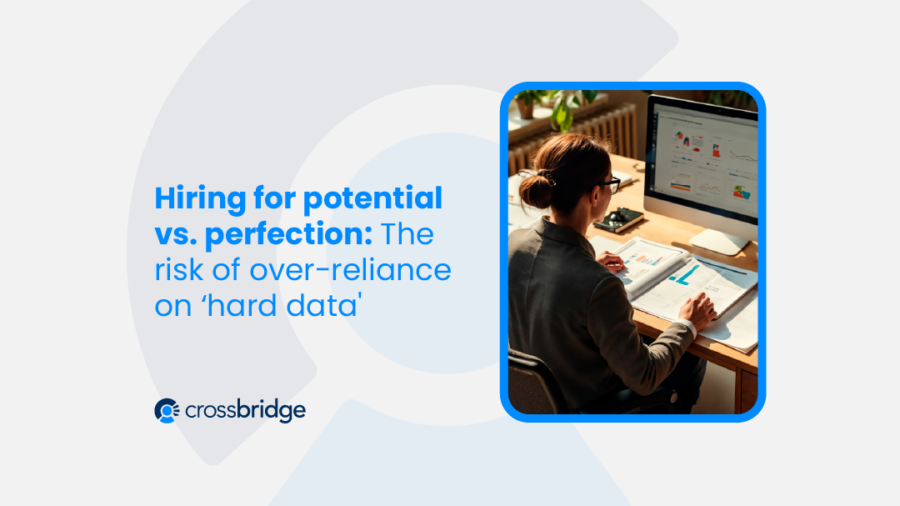The risk of over‑reliance on ‘hard data’
You’ve seen it before: A candidate with a 4.9 GPA, five certifications, and spotless references. On paper, they look unbeatable. But in the interview, their answers feel rigid. Their creativity seems stifled. They care about “doing it right,” not “making it real.” This is the tension at the heart of hiring for potential vs perfection. Relying too much on hard data scores, certifications, and credentials might mean missing the person who could adapt, learn, and transform your company.
Why data alone isn’t enough
In 2025, Korn Ferry found that 67% of companies are increasing AI and analytics in hiring, but 40% worry these systems are too impersonal and risk missing top candidates. Another WorkLife Talent report confirms that companies are shifting to hiring for potential, not perfection.
Data-driven systems tend to reinforce what looks safe. But high performers aren’t always linear; they’re often messy, curious, and unconventional.
What you risk when you chase perfection
- Overlooking raw talent
A Boston Hale 2025 study highlights adaptability as a key trait for agile teams, yet these candidates often lack conventional credentials.
- Missing culture fit
Data can’t reveal whether someone will energize your team, ask the right questions, or handle ambiguity well.
- Building a dystopian hiring funnel
A HumanResourceWebinars report shows nearly 27% of employers plan to rely more on analytics in 2025, but fewer involve qualitative validation.
How to pivot toward potential-first hiring
1. Start with softer signals
Before comparing test scores, ask:
“Tell me about a time you learned something entirely new.”
“Describe a failed project and your biggest takeaway.”
These stories light up resilience and learning potential.
2. Blend qualitative review into your funnel
After your AI shortlist, have humans evaluate:
- Curiosity: Did they ask insightful questions?
- Grit: How did they face setbacks?
- Influence: Do they communicate with empathy?
3. Measure long‑term success, not just initial fit
Track hires on metrics like:
- Retention at 6–12 months
- Team feedback
- Growth trajectories
Harvard’s “Hiring as Exploration” framework reminds us that selecting diverse potential can yield better long-term outcomes than defaulting to past signals.
The payoff when you get it right
- Innovation: because messy learning beats polished conformity
- Agile growth: hiring people who will change with the company
- Serious ROI: studies show combining data with human judgment doubles engagement
Final thought
Hiring for potential vs perfection isn’t a trend it’s a mindset.
Numbers are useful but they’re only half the story. The rest lives in conversation, curiosity, and context. When you value potential and pair it with data, you get high performers who grow with your team, rather than falling behind it
➡️ Want help building a potential‑first hiring funnel? Talk to our team
➡️ ️ Related read: Why the Best Talent Isn’t Always Good on Paper
